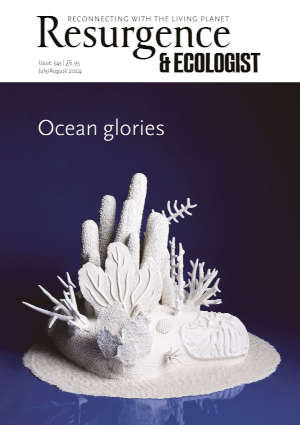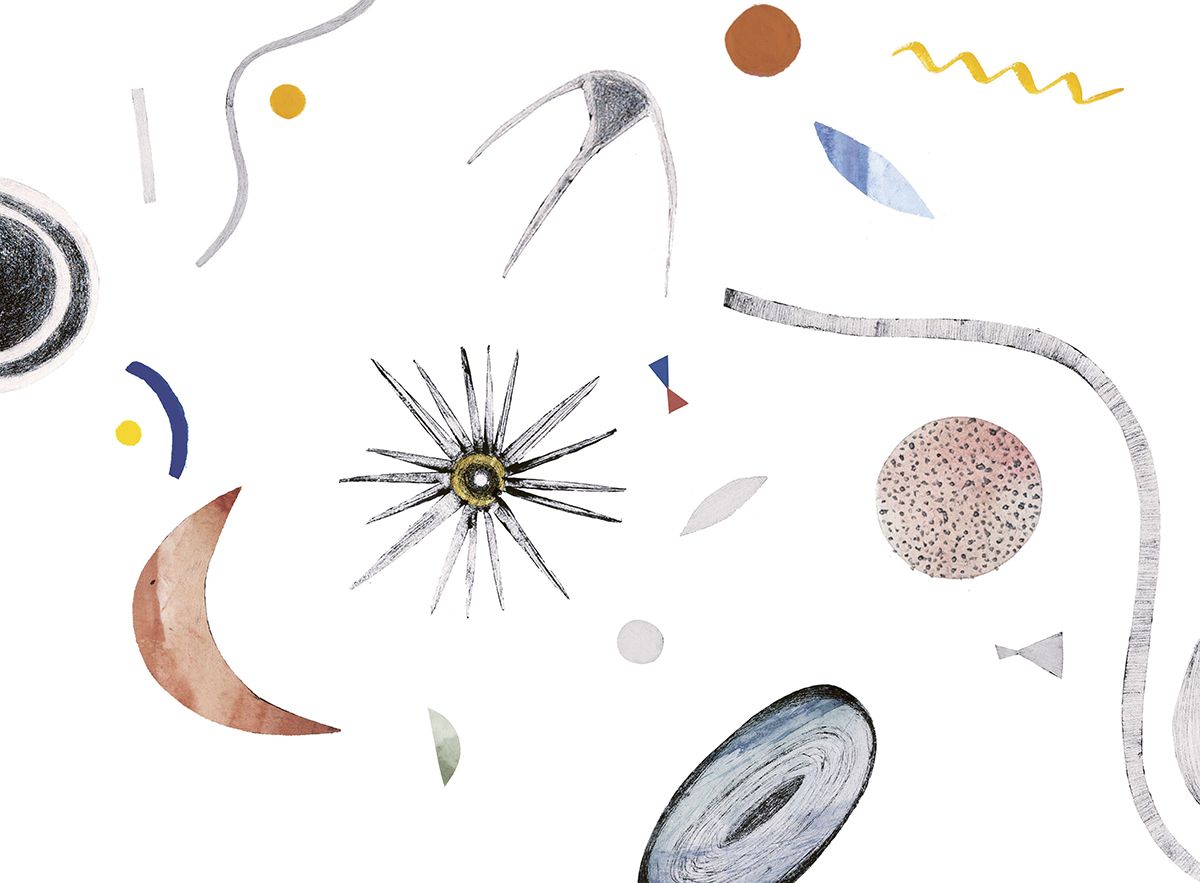Ocean as buffer
Although the ocean has helped slow climate change by absorbing heat and carbon, these changes are also hurting ocean life. The added heat changes the currents of the ocean and how the surface mixes with deeper water. This in turn affects how well nutrients move, which affects phytoplankton and all the life that depends on it. Since phytoplankton are the base of the marine food web – a crucial food source for animals from shrimp to whales – this is a big change for almost everything that lives in the sea. Heating the ocean also makes the water expand, which is the main cause of sea level rise. Finally, the absorption of CO2 is making the ocean more acidic, which is especially dangerous to shellfish and corals.
Action: join www.oceanconservancy.org
Octopus and me
the octopus is dreaming
twitches and rapid eye movements
what is the octopus dreaming of?
crabs and fish
what am I dreaming of?
oceans unharmed
octopus and me
different pillows
same dream
From Nature, My Teacher: How to Be Alive in a World under Threat, by James Thornton, founder of ClientEarth
Coral bleaching
Heartbroken marine scientists are reporting what is being described as the fourth global mass coral bleaching event. Bleaching is a sign of coral under stress and dying because the water it lives in has become too hot for it to thrive. After weeks of gathering reports from scientists around the globe, the US National Oceanic and Atmospheric Administration (NOAA) has now confirmed the mass stress in the Atlantic, Pacific and Indian Ocean basins. The first warning signs were reported in the Caribbean last year when bathers found the water off the coast of Florida as warm as a hot tub.
Action: learn more about what you and your family can do to help prevent the escalation of coral bleaching, at www.coral.org
Wind, Tide & Oar
Filmmaker Huw Wahl’s 90-minute film offers engineless sailing as a means to explore our interaction with and responsibility to the environment. It invites deep reflection on our relationship with Nature, our understanding of and commitment to sustainability, and our care for the world around us. Shot on analogue film over three years, it delves into the experiences of those who travel solely by harnessing the natural elements alone and follows a diverse array of traditional boats. Journeying through rivers, coastlines and open seas, and spanning the UK, the Netherlands and France, Wind, Tide & Oar, which was made in collaboration with Rose Ravetz, creates a contemplative space, addressing themes of ecology, heritage, traditional skills and maritime history.
Action: watch the film – and cancel the vacation cruise.
www.windtideandoar.com/screenings
Re-Stor(y)ing Oceania
Running until 13 October at Ocean Space in Venice, this exhibition, curated by the artist Taloi Havini, coincides with the 60th International Art Biennale and features the work of two Indigenous practitioners from the Pacific, Latai Taumoepeau and Elisapeta Hinemoa Heta. Their site-specific installations and performances explore how Indigenous communities in the Pacific Islands are now on the frontline of managing the impacts of climate change. The exhibition is a joint venture between OGR Torino and TBA21-Academy. Ocean Space is located in the Church of San Lorenzo. Rising sea levels are an irreversible impact of climate change.
Action: get informed.
The End of the Line
Can you imagine a world with no fish? You can still watch a documentary film that was made in 2008 to show the impact of over-fishing on the ocean. George Duffield, a producer on the film, who describes himself as “probably Hollywood’s first impact producer”, went on to co-found Blue Marine Foundation, a charity dedicated to restoring the ocean to health by addressing the serious environmental impact of overfishing. Filmed over two years by Rupert Murray, The End of the Line showed us first-hand the devastating impact of “our global love affair with fish as food”. The film concluded that a world without fish would mean mass starvation. And that was the case more than 15 years ago…
Action: watch the film and stop eating fish.
tinyurl.com/the-end-of-the-line
Ocean gleaning
The book Ocean Gleaning tracks more than 17 years of US conceptual artist, activist and ecofeminist Pam Longobardi’s art and research around the world through the Drifters Project, which she founded in 2006 as an ongoing intervention in which she mobilises citizens, students, scientists, filmmakers and Indigenous communities in labour-intensive cleaning of sea caves, beaches and coastlines worldwide. She says: “Travelling on major expeditions or just walking on the beach, I hunt for and remove plastics that have been tossed about on a long journey through ocean ecosystems.” Using what she finds, she creates artworks that draw attention to the issue of plastic pollution. Longobardi is an artist-in-nature with the Oceanic Society.
Action: visit tinyurl.com/UNEP-reduce-plastic for advice on how you can cut down on single-use plastic.








